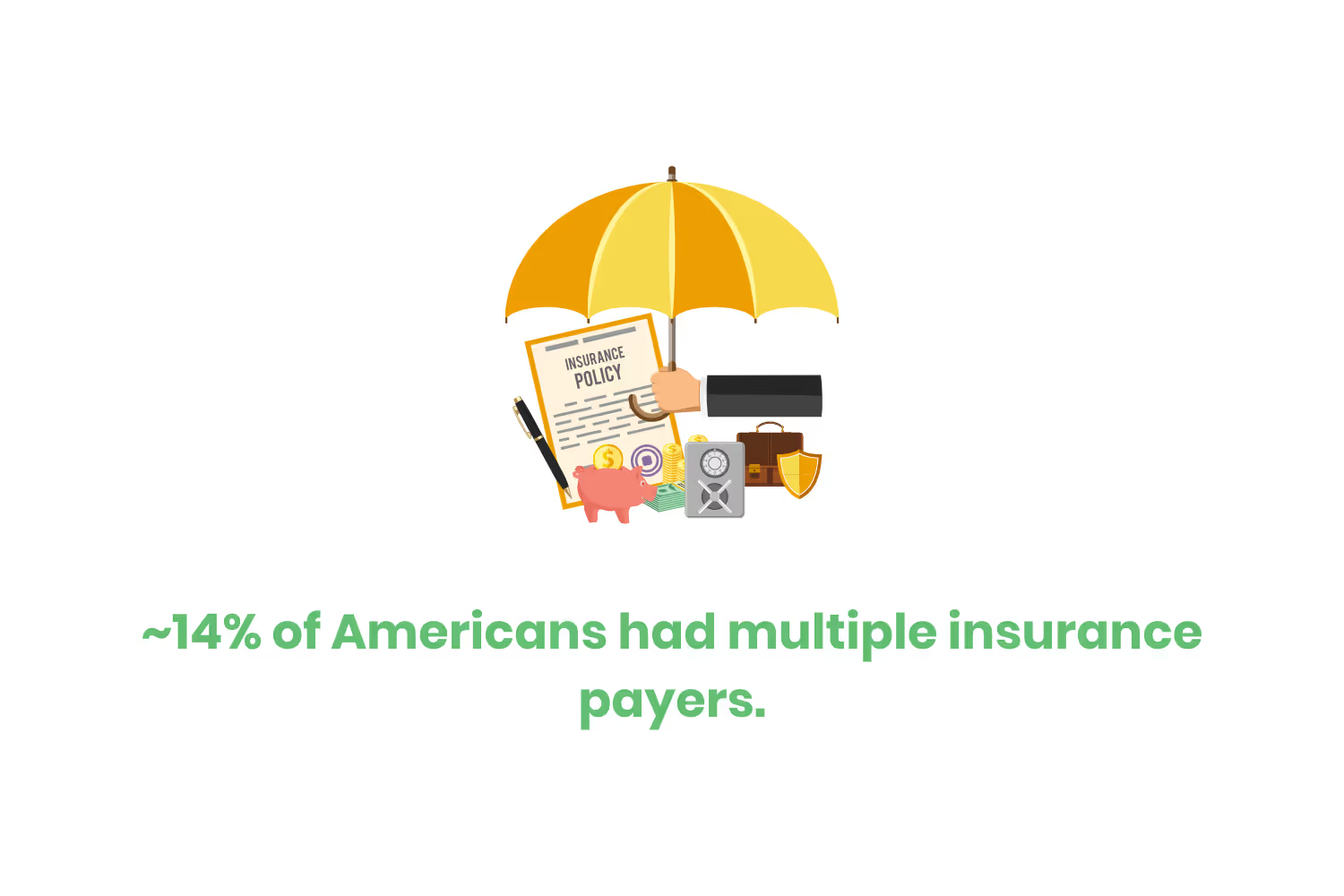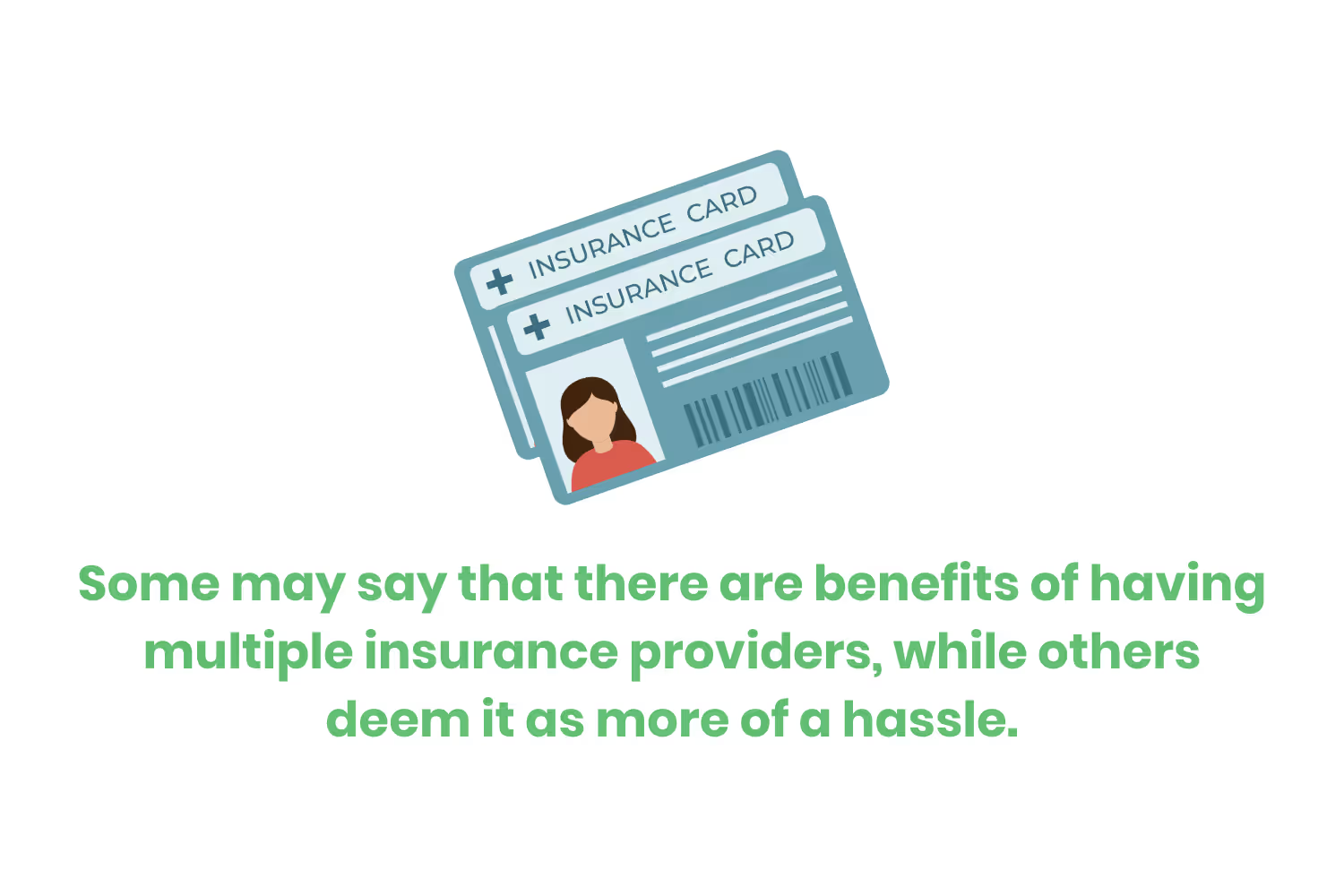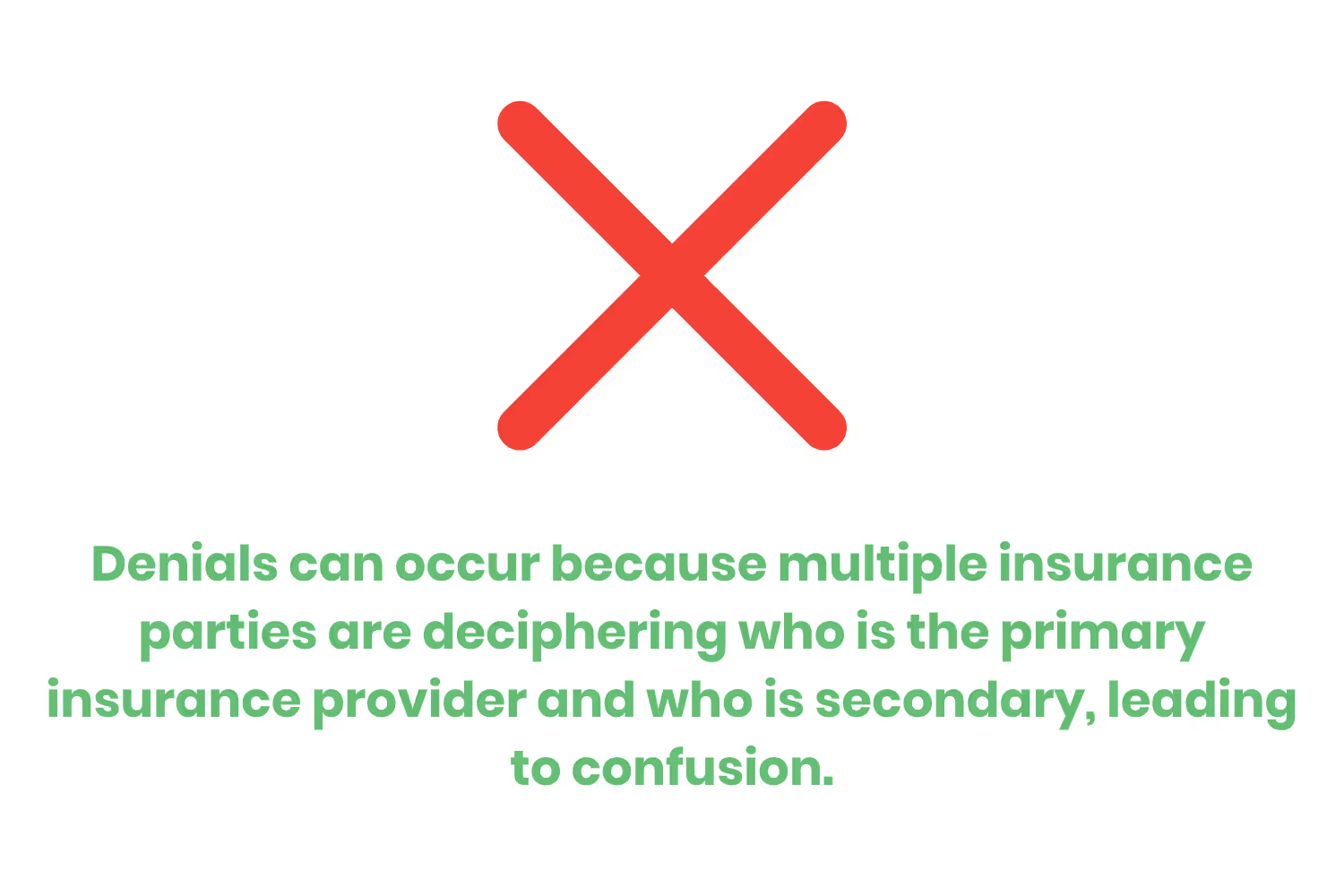[ANSWERED] What is COB in Medical Billing?
Coordination of benefits applies to a patient who has multiple insurance providers also known as payers. It’s more of a backend process, but it’s important to understand from a medical billing perspective.

Around 43 million Americans had multiple health plans in 2021. The U.S. Census Bureau estimated that there were around 301 million people in the United States in 2021. In other words, just about 14% of Americans had multiple insurance payers.
When a patient seeks out a medical treatment or service, the first thing they must do upon arrival is check in. This could either be walking up to a kiosk and going through the process virtually or speaking with a receptionist.

This is the time when a patient provides proof of insurance(s). In this case, we’ll be talking about multiple insurance providers.
Coordination of benefits (COB) applies to a patient who has multiple insurance providers also known as payers.
It’s more of a backend process that we’re about to shed some light on.
What is Coordination of Benefits?
The coordination of benefits determines who pays for what. It’s a process carried out by a patient’s insurance provider to decipher who’s the primary payer and who’s the secondary payer in regard to the specific service that is trying to receive coverage.
The primary payer is the insurance that pays first. They fall first and foremost primarily responsible for paying a claim.
They allow a certain amount for payment, make that payment, and then send it on over to the secondary payer who makes the claim.
Then the secondary payer comes into play. The secondary payer pays the remaining costs that the primary payer did not cover.
Medicare remains the primary payer for those who aren’t covered by other types of health insurance. This can include people who are ages 65 and older as well as people with disabilities.

It’s not a competition between the two, but there’s some back and forth which we will get into.
It can get confusing at times to distinguish what goes where. Think of it as this…a primary payer is standing on the front while the secondary payer comes in for backup.
This is not always the case. There are a lot of variable factors here. It depends on the insurance plans and the service or care you’re receiving.
It’s not guaranteed that 100% of the time having multiple providers will completely cover your healthcare costs.
Both plans may cover some or even the same amount of expenses, but that combination may not be enough to completely compensate for the costs.
There are also occurrences of overpayments. Overpayments occur when the amount paid from the primary insurance carrier is more than necessary, based on the secondary payer’s payment.
This doesn’t mean that the secondary payer needs reimbursement. All that needs adjusting is the patient’s remaining balance in order to counteract the credit. Sort of like balancing it all out.
Reasons Why Patients Have Coordination of Benefits

Now, there could be multiple reasons as to why someone would have two payers. Some may say that there are benefits of having multiple insurance providers, while others deem it as more of a hassle.
Those that have multiple insurance providers agree that having them provides a larger safety net.
Let’s say your primary insurance provider will cover 70% of the costs of a certain healthcare service. That leaves you with a remainder of 30% to pay. If you had a secondary insurance provider that covered this remaining balance, that 30%, then you would have nothing to pay out of pocket.
As we can kind of see already, there are pros and cons to having multiple insurance providers. Let’s first look at some of the benefits.
The Pros of Having a Coordination of Benefits

- By having more than one healthcare provider, a patient’s options or access to care expands.
- In the example that I used above, multiple providers can result in more savings because you can offset more costs. I will mention again that this is not always the case. Having two healthcare providers comes with greater costs associated with other areas as well.
- In the event that you lose access to one of your insurance providers, you’re still covered by the other one.
It can provide a lot of assurance for coverage. It gives policyholders options, but for some, it might be too much.
The Cons of Having a Coordination of Benefits
- Having multiple insurance providers can improve your coverage, but it’s also not guaranteed that you will leave your appointment without having to open your wallet or tap your phone.
- While having two providers can result in more coverage, insurance itself costs money. With two insurance providers, you have to now pay two premiums and two deductibles.
Here are a few definitions that might help to go through.
A premium is a recurring payment a policyholder makes to keep an insurance policy up and running. The cost associated depends on the type of insurance, risk, and coverage amount.

A deductible is the set amount of money that a policyholder must pay out of pocket before the insurance provider will pay for expenses.
A co-payment is different from a deductible. It’s a set amount that a policyholder pays for healthcare treatment or service after they’ve paid the deductible. An example of this is when you go to a doctor’s appointment and have a $20 copay.
So, there’s a greater fixed cost at hand when it comes to multiple insurance providers. Multiple forms of coverage can overlap too much to be worth it.
Now what significance does this have for a healthcare provider if the insurance has to determine the coordination of benefits? Well, there are COB claims and COB denials.
COB Claims and Denials
The primary payer will review the healthcare claim. There are 3 decisions that can come out of this; the primary will pay the claim in full, partially, or completely deny it altogether.
This claim adjudication information then gets sent to the secondary payer from the primary payer.
This can become quite a long and complicated process because the payers are trying to clarify who’s “responsible” for paying or covering what.
What can come out of this long and complicated process you may ask? What I mentioned before…COB claim denials.
These denials can occur because multiple insurance parties are deciphering who is the primary insurance provider and who is secondary. Confusion is the result. Needing more information due to confusion results in a longer waiting time.
What can you do as a healthcare provider to try and avoid this? If a claim includes a coding or misspelling error, the insurance carrier will deny it.

All a denial does for you is delay, delay, delay your payment. The claims process goes on hold because of manual reviews, revisions, and resubmissions.
Prevent coding error delays by implementing coding checks. Detecting errors upfront before they’re submitted eliminates the likelihood of receiving a claim denial.
Making sure that no information is missing is essential to the COB process. You want to give insurance providers as much information as possible. The more, the better. When insurance providers understand the situation at hand, it allows them to make a more conclusive decision as to who is the primary payer, and who is the secondary.
Communication between you and your patients is another important way to make this process as simple as possible. Understanding where your patients stand in relation to their insurance providers as well as what they will cover is a responsibility that falls onto the healthcare provider.
You should know what you’re getting into before offering a service and go from there. Patients can also help to prevent errors and delays by providing you with the necessary and most accurate information in a timely fashion.
Not to mention, it’s probably easier to reach out to your patients than it is to insurance providers…I would hope.
It’s important to mention, that keeping patients in the claim adjudication loop helps to build strong relationships.
There are things we can do on the healthcare provider side to support the process of claim adjudication. Staying on top of claims as well as having accurate information on hand will save you, your patients, and insurance providers time and frustration.
Conclusion
The coordination of benefits is a common thing to see in the healthcare industry today.
In 2021, 14% of Americans had multiple insurance providers.
This means that there is primary and secondary insurance. Coordination of benefits determines who is responsible for paying what- depending on the service requesting coverage.
There are many reasons as to why people do or do not have multiple payers. Having multiple payers can reduce costs, give policyholders more options, and serve as a safety net in the event that you were to lose insurance coverage by losing a job or something along the lines of that.
COB has its setbacks. Having two insurance providers can be difficult to navigate. Sometimes more of the options at hand create more issues. A larger premium and deductible amount may be something to be on the lookout for. Since you have two insurance providers, you’re making these fixed payments twice.
On the backend, the COB process can take time. Deciphering who needs to pay what can go back and forth. This is why healthcare providers need to do as much on their part as possible to help prevent any delays.
This means being on the lookout for coding or misspelling errors. If either of these are prevalent in a claim, there is no doubt you will receive a denial. When a denial occurs you’ll have to go through a manual review and then resubmit the claim for approval. All this does is take up time. Prevent this by checking and reviewing your claims.
Make sure that you are giving the insurance providers as much information as possible. The more they know about the situation, the easier it will be for them to come to a decision.
Effective communication with your clientele is important! Being aware of their insurance history as well as what’s covered makes the difference here. Not to mention that it’s also easier to get information from your patients than it is from insurance providers. Keeping them involved in the process builds strong rapport!
Emphasize your product's unique features or benefits to differentiate it from competitors
In nec dictum adipiscing pharetra enim etiam scelerisque dolor purus ipsum egestas cursus vulputate arcu egestas ut eu sed mollis consectetur mattis pharetra curabitur et maecenas in mattis fames consectetur ipsum quis risus mauris aliquam ornare nisl purus at ipsum nulla accumsan consectetur vestibulum suspendisse aliquam condimentum scelerisque lacinia pellentesque vestibulum condimentum turpis ligula pharetra dictum sapien facilisis sapien at sagittis et cursus congue.
- Pharetra curabitur et maecenas in mattis fames consectetur ipsum quis risus.
- Justo urna nisi auctor consequat consectetur dolor lectus blandit.
- Eget egestas volutpat lacinia vestibulum vitae mattis hendrerit.
- Ornare elit odio tellus orci bibendum dictum id sem congue enim amet diam.
Incorporate statistics or specific numbers to highlight the effectiveness or popularity of your offering
Convallis pellentesque ullamcorper sapien sed tristique fermentum proin amet quam tincidunt feugiat vitae neque quisque odio ut pellentesque ac mauris eget lectus. Pretium arcu turpis lacus sapien sit at eu sapien duis magna nunc nibh nam non ut nibh ultrices ultrices elementum egestas enim nisl sed cursus pellentesque sit dignissim enim euismod sit et convallis sed pelis viverra quam at nisl sit pharetra enim nisl nec vestibulum posuere in volutpat sed blandit neque risus.

Use time-sensitive language to encourage immediate action, such as "Limited Time Offer
Feugiat vitae neque quisque odio ut pellentesque ac mauris eget lectus. Pretium arcu turpis lacus sapien sit at eu sapien duis magna nunc nibh nam non ut nibh ultrices ultrices elementum egestas enim nisl sed cursus pellentesque sit dignissim enim euismod sit et convallis sed pelis viverra quam at nisl sit pharetra enim nisl nec vestibulum posuere in volutpat sed blandit neque risus.
- Pharetra curabitur et maecenas in mattis fames consectetur ipsum quis risus.
- Justo urna nisi auctor consequat consectetur dolor lectus blandit.
- Eget egestas volutpat lacinia vestibulum vitae mattis hendrerit.
- Ornare elit odio tellus orci bibendum dictum id sem congue enim amet diam.
Address customer pain points directly by showing how your product solves their problems
Feugiat vitae neque quisque odio ut pellentesque ac mauris eget lectus. Pretium arcu turpis lacus sapien sit at eu sapien duis magna nunc nibh nam non ut nibh ultrices ultrices elementum egestas enim nisl sed cursus pellentesque sit dignissim enim euismod sit et convallis sed pelis viverra quam at nisl sit pharetra enim nisl nec vestibulum posuere in volutpat sed blandit neque risus.
Vel etiam vel amet aenean eget in habitasse nunc duis tellus sem turpis risus aliquam ac volutpat tellus eu faucibus ullamcorper.
Tailor titles to your ideal customer segment using phrases like "Designed for Busy Professionals
Sed pretium id nibh id sit felis vitae volutpat volutpat adipiscing at sodales neque lectus mi phasellus commodo at elit suspendisse ornare faucibus lectus purus viverra in nec aliquet commodo et sed sed nisi tempor mi pellentesque arcu viverra pretium duis enim vulputate dignissim etiam ultrices vitae neque urna proin nibh diam turpis augue lacus.




